Have you ever wondered if the air you breathe every day is truly clean? How can you know the pollution level and protect your family’s health? The answer lies in understanding the air pollution index. This article will provide you with all the necessary information, from how to read the AQI to practical preventive measures.
1. What is Air Pollution Index?
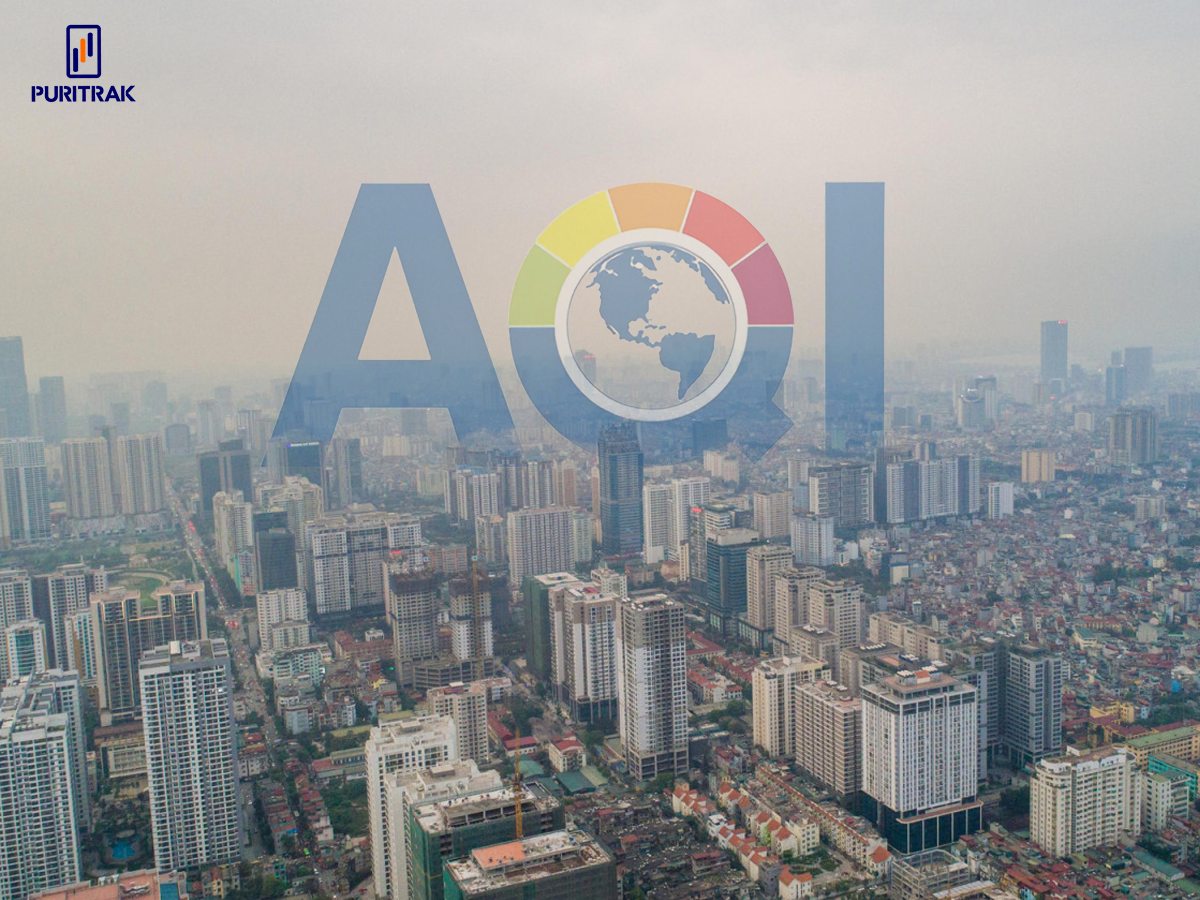
The air pollution index, also known as the Air Quality Index (AQI), is a technical parameter converted from the concentrations of major air pollutants. This index serves as a simplified measure to warn the community about air conditions and the potential level of impact on human health.
Simply put, the AQI is an alarm bell for your respiratory health. It converts complex data on the concentrations of various pollutants into a single number, an easy-to-remember scale, and color codes. The higher the AQI, the worse the air quality.
2. Factors measured in the Air Quality Index
The U.S. Environmental Protection Agency (EPA) determines the Air Quality Index (AQI) based on five key air pollutants:
- PM2.5 Fine Dust: Ultra-fine particles with a diameter ≤ 2.5 microns. This is often the main pollutant in major Vietnamese cities. They originate from vehicle emissions, industrial activities, straw burning, and construction. PM2.5 can penetrate deep into the lung alveoli and even enter the bloodstream, causing serious respiratory and cardiovascular diseases.
- PM10 Fine Dust: Particles with a size ≤ 10 microns. Although less dangerous than PM2.5, they can still cause irritation to the eyes, nose, and throat.
- Ozone (O3): A gas formed from chemical reactions under sunlight. Ground-level ozone is a harmful substance that irritates the respiratory tract, causing coughing and chest tightness.
- Nitrogen Dioxide (NO2): Comes mainly from fuel combustion processes (vehicles, power plants), causing pneumonia and exacerbating asthma.
- Sulfur Dioxide (SO2): Emitted from burning coal and oil, causing respiratory problems and the formation of acid rain.
3. AQI Scale analysis & meaning
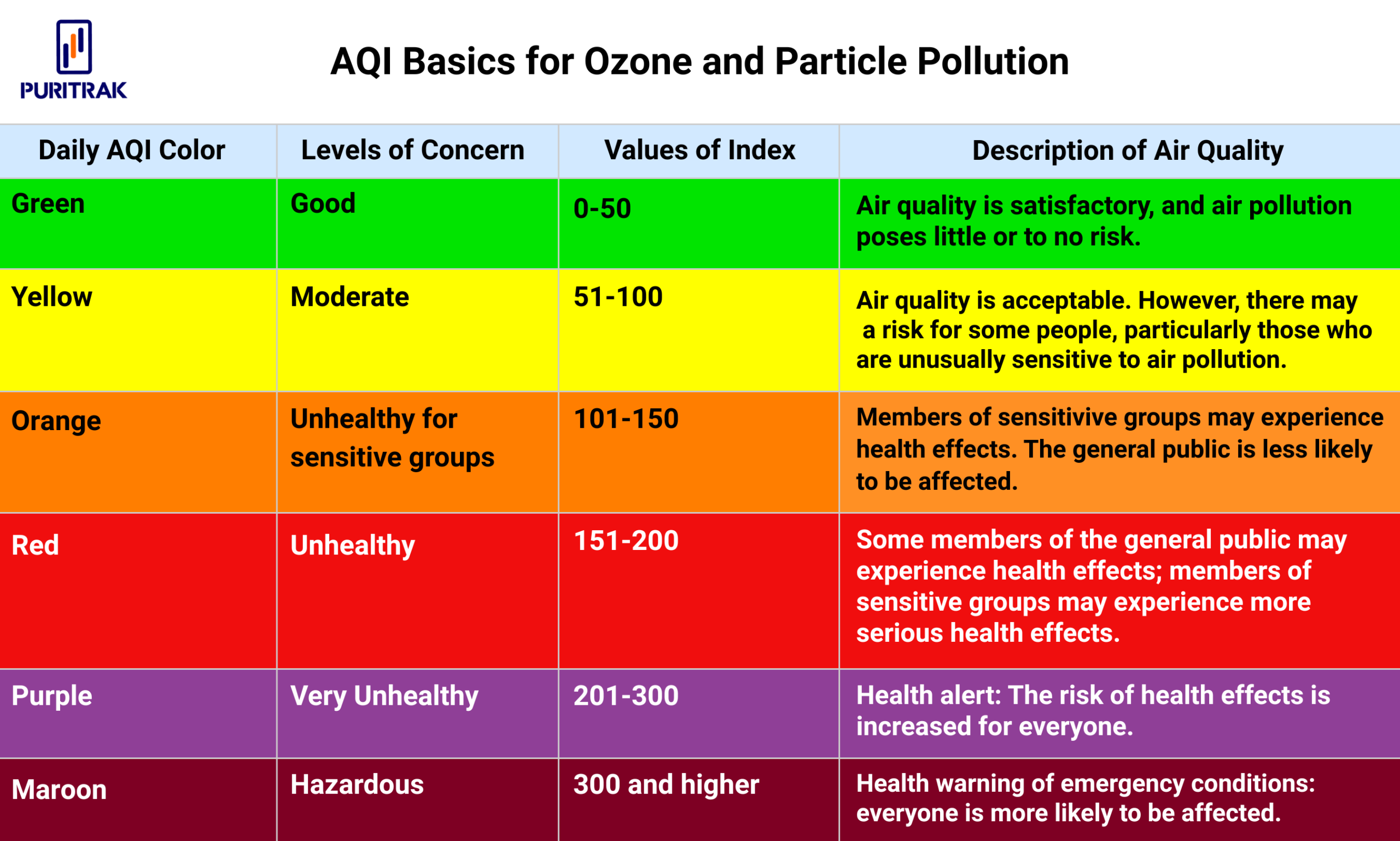
The AQI scale is divided into levels with intuitive color codes, helping you easily recognize air conditions:
- Good (0 – 50) – Green: Air quality is satisfactory, air pollution poses little to no risk.
- Moderate (51 – 100) – Yellow: Air quality is acceptable. However, there may be a risk for some people, particularly those who are unusually sensitive to air pollution.
- Unhealthy for Sensitive Groups (101 – 150) – Orange: Members of sensitive groups may experience health effects. The general public is less likely to be affected.
- Unhealthy (151 – 200) – Red: Some members of the general public may experience health effects; members of sensitive groups may experience more serious health effects.
- Very Unhealthy (201 – 300) – Purple: Health alert: The risk of health effects is increased for everyone.
- Hazardous (>300) – Maroon: Health warning of emergency conditions: Everyone is more likely to be affected
Besides this 6-level system, some countries use their own systems. In South Korea, the Comprehensive Air-quality Index (CAI) is divided into 4 levels: Good – Moderate – Unhealthy – Very Unhealthy. In the United Kingdom, parameters are measured separately and divided into 10 levels (1 to 10) for environmental researchers and the public to monitor in the most specific and understandable way.
4. Checking the Air Pollution Index
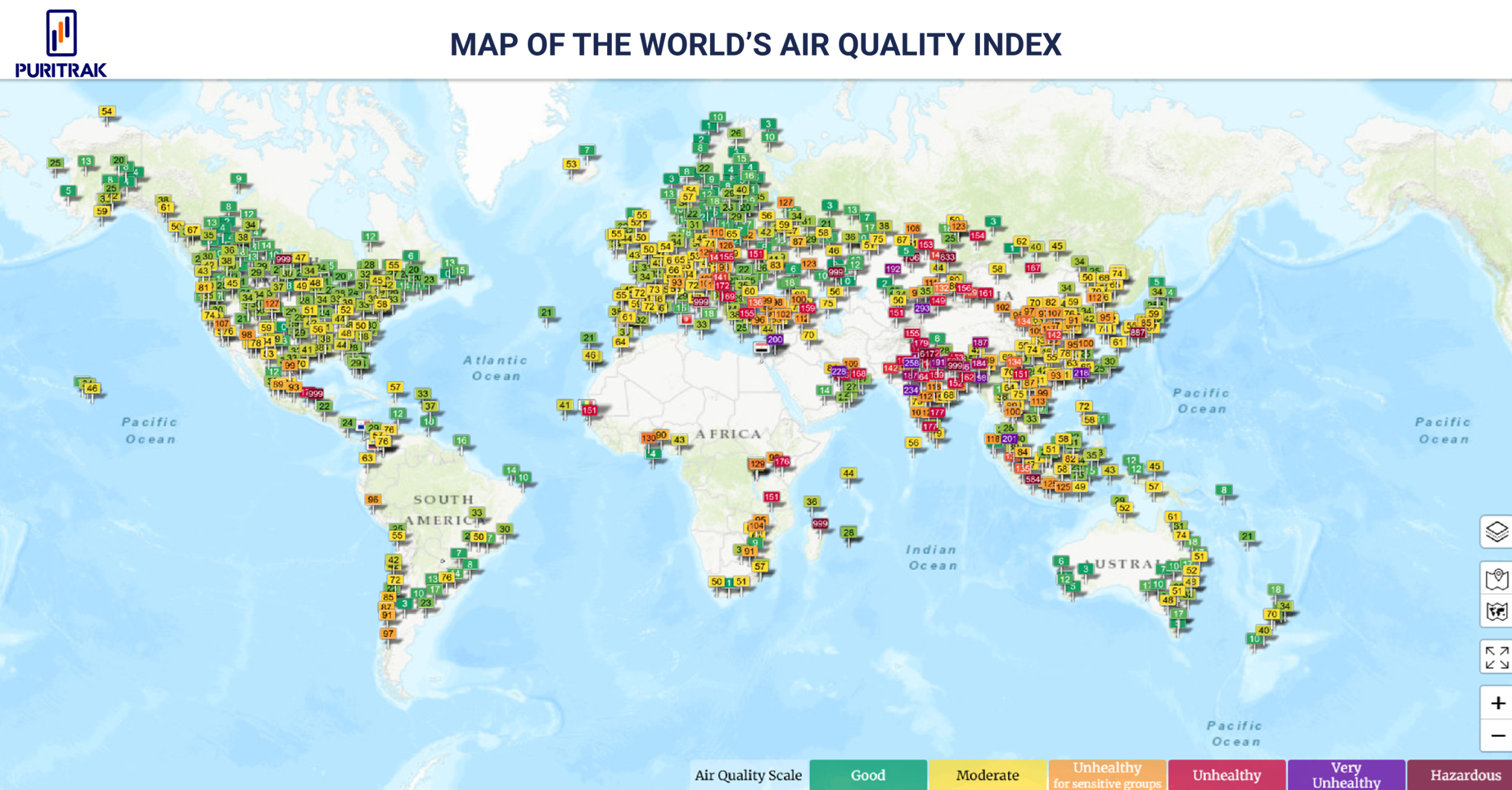
You can easily track the AQI in your living area through the following tools:
4.1. Mobile Applications
- AirVisual (IQAir): Provides real-time data, AQI forecasts, and city pollution rankings.
- Plume Labs: User-friendly interface, provides the “best time of day” index for going outside.
- Weather Apps: Apps like Weather Underground or Apple Weather have integrated AQI indices.
- Puritrak’s AirNow Air Quality Management System: Allows accurate real-time monitoring of both indoor and outdoor air quality.
4.2. Reputable Websites
- AirVisual (IQAir): Provides a visual global air quality map.
- WAQI.info: An open community project providing real-time data from monitoring stations worldwide.
- Vietnam’s Environmental Monitoring Portal (by the Vietnam Environment Administration): Provides official data from domestic monitoring stations.
5. Health protection measures according to AQI levels
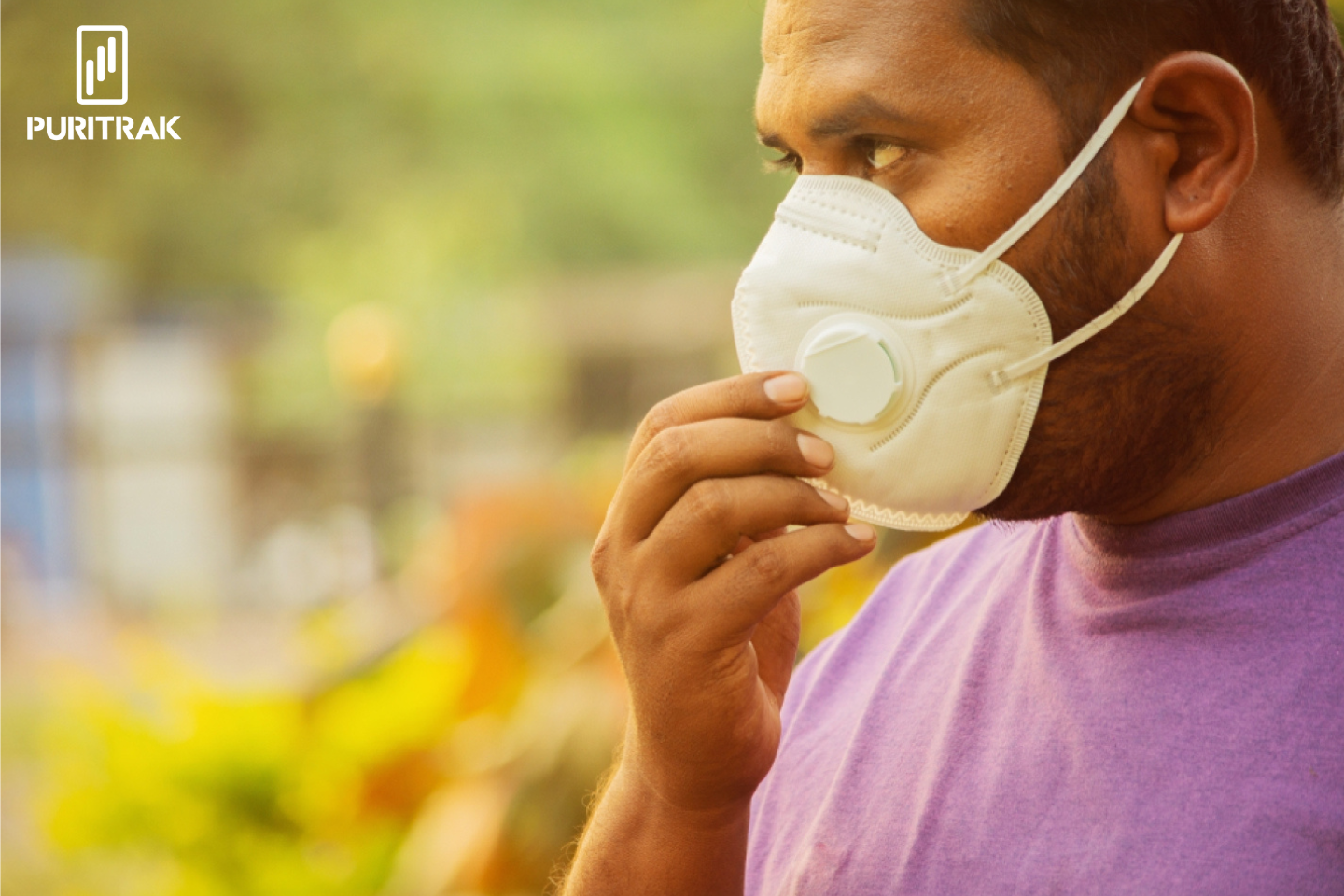
- Yellow (Moderate): Sensitive groups should limit prolonged outdoor activities.
- Orange (Unhealthy for Sensitive Groups): Sensitive groups should limit outdoor exposure. The general public should reduce heavy outdoor activities.
- Red (Unhealthy), Purple (Very Unhealthy), and Maroon (Hazardous):
- Limit going outdoors: Everyone, especially sensitive groups, should stay indoors.
- Close windows: Prevent polluted air from entering the house.
- Use air purifiers: Choose a purifier with a HEPA filter to effectively remove PM2.5 fine dust.
- Wear standard masks: When going outside is necessary, use N95/KN95 masks or medical masks capable of filtering fine dust.
Read more:Puritrak’s Air Purifiers & Air Quality Management Devices
Monitoring the daily air pollution index (AQI) is a necessary habit to proactively protect your and your family’s health. By understanding the meaning of the AQI and applying timely preventive measures, you can minimize the harmful effects caused by air pollution.
The above answers the question “What is the air pollution index?”. If you need information about air purifiers, please contact the details below; Puritrak’s technical department will guide and answer your questions. Thank you for reading the article!
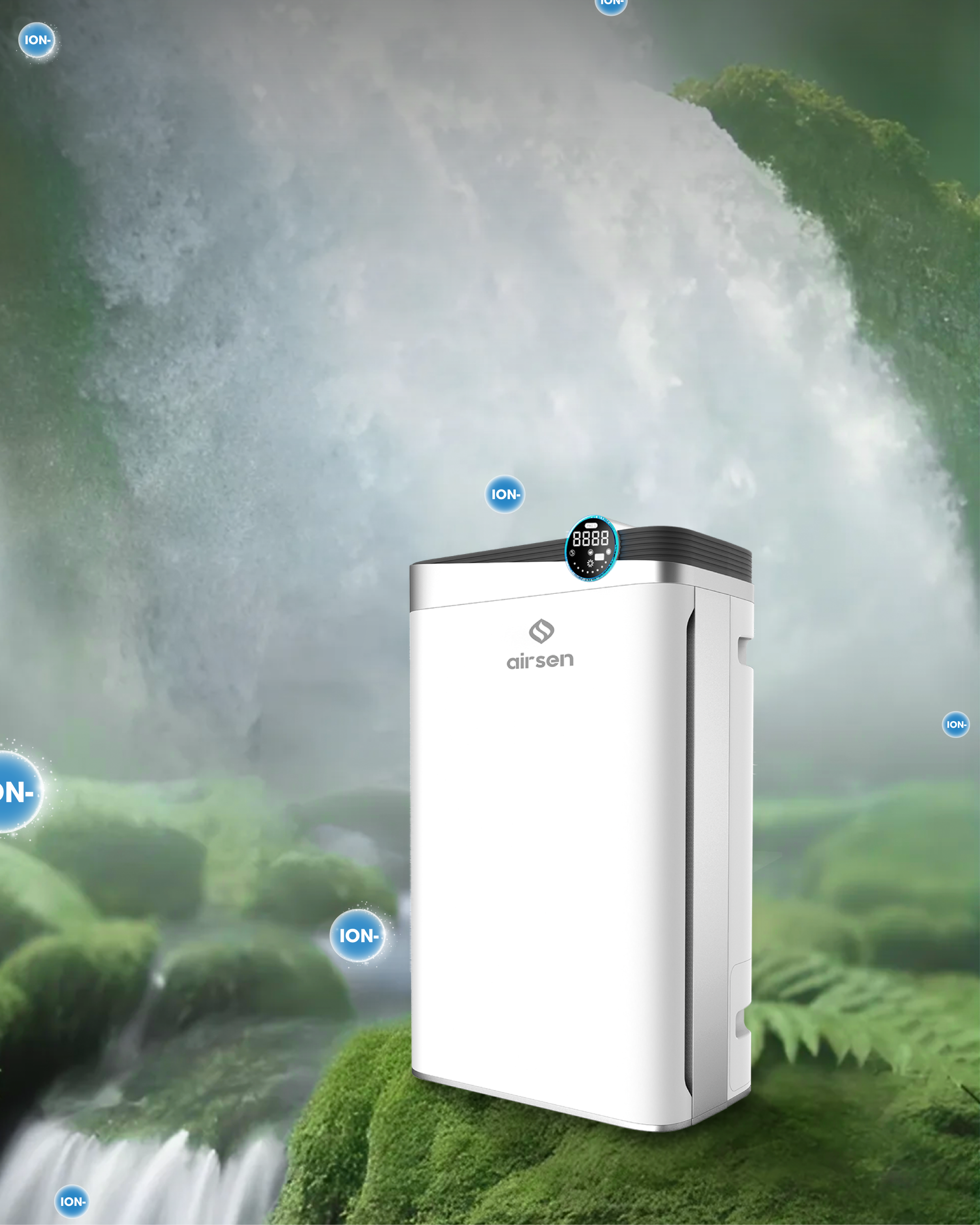
Contact Info:
- Hotline: 0904.800.006
- Website: puritrak.com
- Email: [email protected]
- Fanpage: Puritrak


